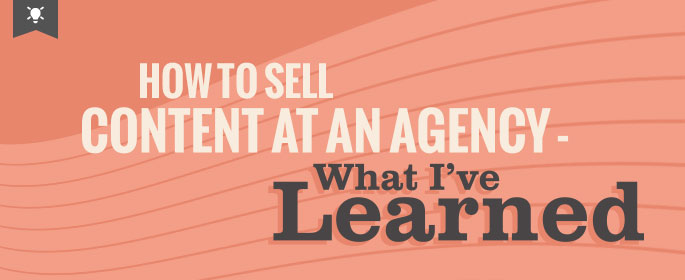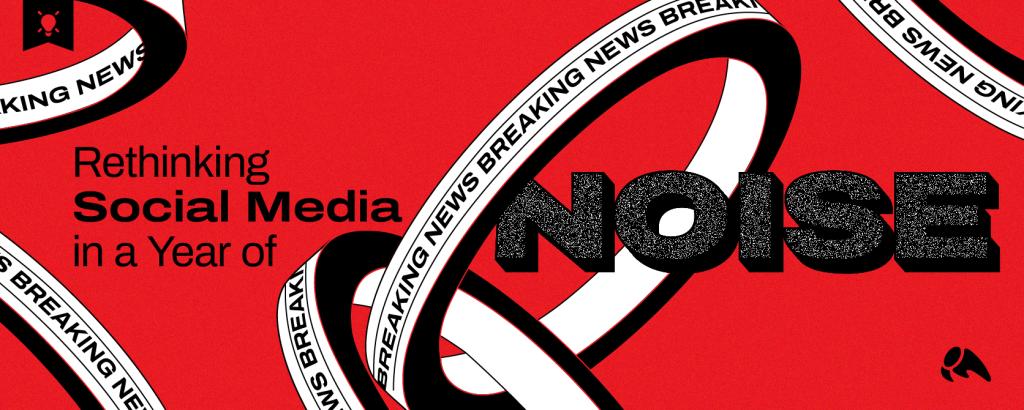
Nine years ago I begged for accepted my first position as a marketing copywriter. At the time, I was just happy to get paid to write help brands find a voice and connect with customers. What I didn’t know back then, and what I know now, is that my job would grow into not only writing content for brands, but selling content, as well.
Through the years, I’ve sold content as:
- An agency-level copywriter
- An agency owner
- An executive to top-tier clients
- To my internal team over and over and over again
Here’s what nine years of selling content has taught me about content.
You Can’t Sell The Words. Sell What The Words Do.
Here’s a hard truth – most people have no idea what “content” means.
To a client, to a sales team or even to your boss, “content” refers to the body copy that exists on a page of a website. It’s the homepage, or the product page or even the about page. This is why it’s so easy for clients and bosses to dismiss it. If you view content as the words used to describe a new tub of hair gel or a cool pair of running shoes, it’s pretty easy to discount it or to think it’s something your intern can do. Anyone can write a sentence — or at least that’s what they’d like to believe.
That’s why you can’t sell the words. You have to sell what the words do.
Recently, I wrote that content is more than just an information transaction. Content does many things.
- Content is branding: Your content is your emotional DNA. It’s how you position yourself in your market. It’s your top selling points and your key messaging. Good content makes you instantly recognizable from your competitors. Almost anyone can write the 5Ws of who you are. But a skilled content writer can make sure your voice is recognizable in the dark to your target audience.
- Content is user experience (partly): Content guides the user experience. Your site hierarchy, how things fall, how they’re described and how a user is pointed from Point A to Point B is influenced by the content on your website. When you don’t sell content as part of that process, you risk designing a website that is aesthetically beautiful but functionally broken. Make no mistake: It doesn’t matter how your website looks, or how great the technology is behind it, if it is not functional to a real user.
- Content is a sales/upselling tool: One of the most obvious things content does is educate. It educates the consumer not only about how your product/service can help them today, but how it can help them in the future, when the time comes, and when their needs change. Good content is an evergreen resource to show them how to do X, how to accomplish Y and how to upgrade to Z as their business or need grows.
- Content provides answers: Good content keeps your sales team off the phone, and your customer support team out of their email, when customers can solve their own problems with resources that already exist.
- Content helps conversions: Content isn’t just about the words on your page. Content is about the action those words inspire. By investing in content, you set your site up for success by writing stronger, emotion-backed calls to action; by removing conversion roadblocks like excess links or images that distract; by naming buttons, tabs and fields appropriately; by building customer confidence with clear benefit statements and value propositions and by removing friction from the conversion process.
Instead of selling content on the number of hours it will take to write that homepage, sell it based on the value you will create.
Your Presentation Will Determine The Sale
I hate this.
I hate that this is true. As a content person, I’d like to think simply writing the proposal that explains the value of our content services will be enough to woo someone into partnering with Overit. However, that’s not always the case. If I want to sell a large content retainer, I need to put on my party hat and sell what our Content team can do. I need to present the value.
I need to show our ideas.
Relax, this doesn’t mean you’re locked into whatever you pitched at the initial client meeting, but you need to establish where things could go.
- Present the idea – whether it’s a blog, a content guide, a video, a cartoon, an infographic, etc. What could you do?
- Present how it will appeal to their audience.
- Present how it fits into their sales funnel and will help them attract new leads/retain current customers/do whatever it is they want to do.
- Present how the content will be broken up to feed email campaigns, a blog calendar, social updates.
- Present the lifecycle for that piece of content.
You need to present your ideas and how this is going to work. That’s how you’re going to get someone to see the big picture and the long-term value. By painting the picture.
You can’t present a piece of content. You need to present how a content mindset will change the organization.
Content Should Be Sold As Earned Attention
Clients are used to buying attention. Whether it’s a billboard, a television ad or Web advertising, they get how that works. However, I’ve never met a client who would mind getting for free what they’re currently paying for.
And that’s how content should be sold – as the foundation for earning that attention.
That means taking a top-down approach to content.
It starts at the top when we’re first learning about our client’s customer. It’s collecting the data (or purchasing it) to understand who their best customers are, their hobbies, their interests, their problems, how they consume information and what they’re most likely to do next. From there, personas are built.
Once you have that initial understanding, the way it impacts the content strategy and site experience are damn near amazing.
It’s used for:
- Content development: The creation of new content assets (written, video, images, whatever) to solve the needs of their customers, while also giving the sales team something new to leverage.
- Content strategy: How are we using customer insights to change how we interact with our audience?
- More relevant ad copy: When you know who your customers are, you can create offers and promotions that are of the highest relevance to their needs and interests.
- Tighter messaging: Again, if you know who your customer is, you can wrap your messaging around solving their problem.
- UX: Optimizing the brand experience (web and mobile) around the user and their goals.
The answer to all of your customers’ problems is content. Content solves them. Knowing who your customers are simply lets you solve the right problem, all over your website and off of it.
Clients Aren’t The Only Ones Who Have To Be Sold
It’s easy for content to get trampled on. Part of that is because, as mentioned earlier, not everyone understands what content really is for a website or all the parts it plays.
The other reason is that content isn’t as sexy as design or an animated video or whatever new technology is wooing the development team. Content is just words.
Selling content in an agency means fighting for content, every day, and helping the rest of your team see its value in the larger project. Today, I’m thankful to work on a team that does prioritize content, but that doesn’t mean those discussions don’t still happen.
I still need to be able to explain:
- Why we need content on the homepage
- Why we can’t reuse all the old content
- Why this page matters and why it should be called this
- Why, even if the client writes their own content, we still need hours to edit it
- Why, despite what you heard on the Internet, people do actually read things
And you know what? That’s on me to be able to explain. If I am unable to communicate why content matters, then content dies within the organization. Content people are at the table. We’ve gotten our invite. Now it’s up to us to sell content and its value to others.
What has your experience been? How are you able to sell content both to your client, as well as to your internal team? I’d love to know.





